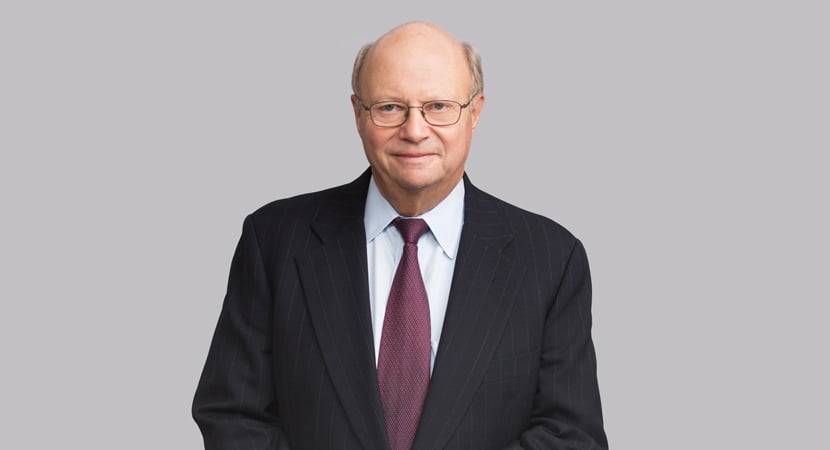Erik Brunetti, who has owned the clothing brand “fuct” since founding it in 1990, appealed the decision by the Trademark Trial and Appeals Board denying the registration of the mark “FUCT.” The board affirmed the decision by the Patent and Trademark Office examining attorney who had initially refused to register the mark on the grounds that it was a derivative of the expletive “fucked” and thus constituted immoral or scandalous material. Section 2(a) of the Lanham Act grants the PTO authority to refuse any registration that “[c]onsists of or comprises immoral, deceptive, or scandalous matter.”
On appeal, the court agreed with the TTAB that the mark fell within the scope of the restriction on immoral or scandalous marks because it is vulgar, but nonetheless reversed the TTAB’s decision on the grounds that Section 2(a)’s restriction on immoral or scandalous marks is unconstitutional under the First Amendment. The court relied heavily on the Supreme Court’s recent plurality and concurring opinions in Matal v. Tam, which held that Section 2(a)’s similar restriction on disparaging marks constituted an impermissible and unconstitutional restriction on free speech. (Read our summary of the Supreme Court’s decision in Tam here.) In that ruling, the Supreme Court held that the disparagement clause of Section 2(a) was an unconstitutional “viewpoint-based” restriction, but did not reach the constitutionality of other parts of Section 2(a), including the “content-based” but “viewpoint neutral” restraint on immoral or scandalous marks at issue in this case. Despite the distinction, the Federal Circuit held that the restraint on immoral and scandalous materials was also unconstitutional.
First, the Federal Circuit rejected the government’s argument that the trademark registration system is akin to a government subsidy program, which permits Congress to attach certain conditions to the use of its funds to further the purpose for which the subsidy is granted. The court held that, because no funds are granted to a trademark owner, registration is not a government subsidy or subsidy equivalent. If a registration program gave the government authority to regulate speech, the court noted, every governmental registration program would provide the government with similar censorship authority, including the copyright registration system. The court also rejected the government’s argument that the trademark registration program is a “limited public forum” – a doctrine that allows the government to regulate speech under certain conditions on property in the government’s charge. Reviewing Supreme Court precedent, the court held that this doctrine applies only where the “forum” at issue is or is “tethered to” government property. Because the “speech that flows from trademark registration is not tethered to a public school, federal workplace, or any other government property,” the doctrine was held not to apply.
Second, the court rejected the government’s argument that the restriction on immoral or scandalous marks targeted pure commercial speech, as to which a less exacting standard of “intermediate scrutiny” applies. While trademarks certainly serve a commercial source-identifying function, the court explained that they can also convey expressive content. The court held that, in this case, “the immoral or scandalous provision targets a mark’s expressive message, which is separate and distinct from the commercial purpose of a mark as a source identifier,” as the restriction empowers the PTO to reject marks on the grounds that they convey offensive ideas. Accordingly, the court held that the heightened “strict scrutiny” standard applied to determine the constitutionality of the content-based restriction, under which the government conceded the restriction could not survive.
Third, the court held that the restriction could not survive even intermediate scrutiny if offensive and scandalous marks were deemed to be pure commercial speech. Under this test, regulations on commercial speech will be deemed constitutional if, inter alia, “the asserted government interest is substantial,” “the regulation directly advances that government interest” and “the regulation is not more extensive than necessary to serve that interest.” The court held that none of these factors were satisfied.
The court rejected the government’s argument that it has a substantial interest in “protecting public order and morality.” Relying on Supreme Court precedent striking down regulations on offensive speech, the court held that “the government’s general interest in protecting the public from marks it deems ‘off-putting’ … is not a substantial interest justifying broad suppression of speech.” The court distinguished this case from Supreme Court precedent upholding the constitutionality of government action on radio broadcasts, which have been upheld because they confront listeners “in the privacy of the home, where the individual’s right to be left alone plainly outweighs the First Amendment rights of an intruder,” and the listener may not want to receive unexpected messages. A trademark, by contrast, “is not foisted upon listeners by virtue of its being registered.” The court also held that the restriction on immoral or scandalous marks does not advance the government’s asserted interest, because, regardless of whether a mark is registered, an applicant can still use the mark in the manner deemed immoral or scandalous. The court also held that the regulation could not meet the final prong of the intermediate scrutiny test because the PTO’s inconsistent application of the scandalous and immoral provision had created uncertainty that undermines the likelihood that the provision has been narrowly tailored.
Finally, the court rejected an invitation to construe the restriction narrowly to preserve its constitutionality, namely by limiting the terms “immoral” and “scandalous” to apply only to marks that are sexually obscene. Regulations on sexual obscenity have been upheld under certain circumstances as passing constitutional muster. The court held, however, that this construction of the terms “immoral” and “scandalous” would be unreasonable, and that it could not stand in the shoes of the legislature and effectively rewrite the statute. In a concurring opinion, one judge would have read the provision to restrict only sexually obscene material, which, according to that opinion, “would preserve the core of the provision.”
Summary prepared by Wook Hwang and Erin Smith Dennis
-
 Partner
Partner -
 Partner
Partner -
 Co-Chair, Litigation
Co-Chair, Litigation -
 Chair, Intellectual Property Protection; Chair, Luxury Brands; Deputy Chair, Advanced Media and Technology
Chair, Intellectual Property Protection; Chair, Luxury Brands; Deputy Chair, Advanced Media and Technology -
 Partner
Partner -
 Legal Publications Editor
Legal Publications Editor
)

